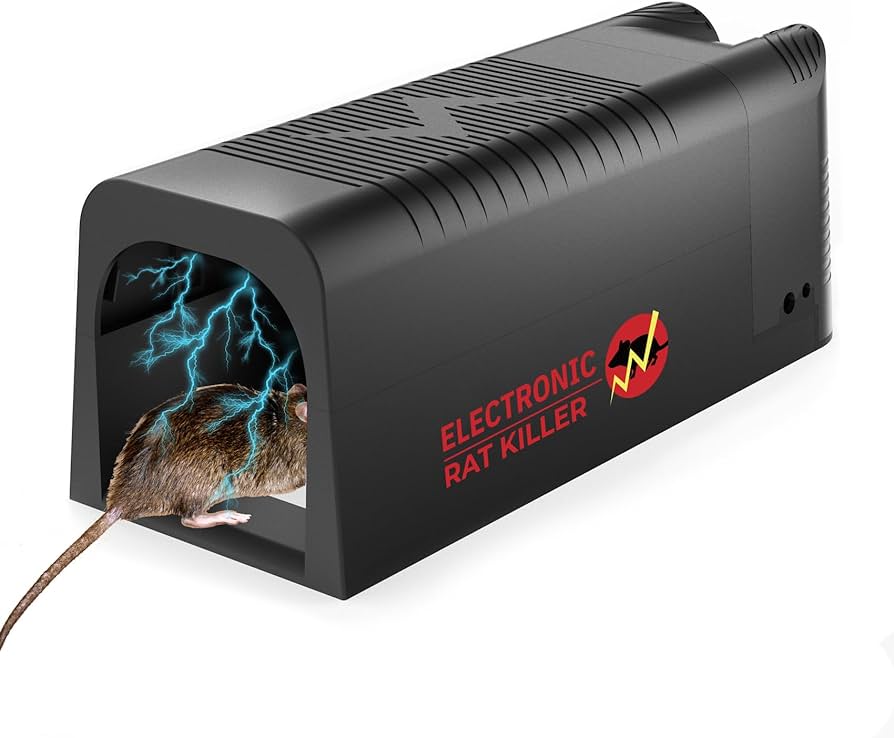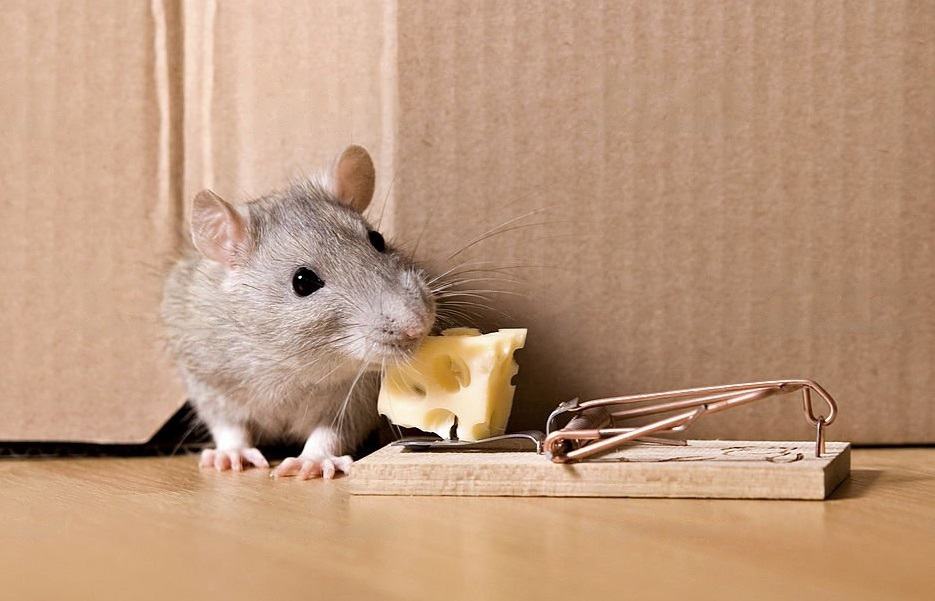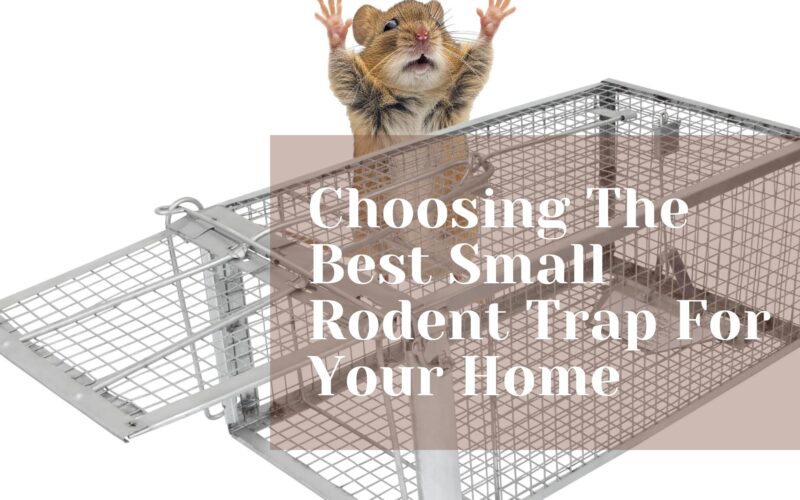Dealing with small rodents can be tough. The right trap makes all the difference. Do you want a humane solution or quick removal? There are many traps out there, each with pros and cons. This guide will help you pick the best one for your home and needs.
Imagine waking up to the sound of scratching in your walls. You find out your home is now home to a furry, four-legged guest. You wonder, what’s the best way to get rid of these pests? The answer depends on the type of trap you choose and its benefits and drawbacks.
Understanding the Importance of Small Rodent Traps
Small rodents like mice and rats can be a big threat at home. They carry over 35 diseases, including hantavirus and salmonella. These diseases can spread through bites, scratches, or touching contaminated items.
These pests also like to chew on electrical wires, which can cause short circuits and even house fires. They can damage your belongings and the structure of your home by making nests and tunnels. It’s important to stop them from getting in to keep your home safe and healthy.
Preventing Disease Transmission
Rodents like mice and rats carry many pathogens that can make people sick. Diseases such as hantavirus and salmonella can spread through contact with their urine, droppings, or dust. Using effective traps can lower the risk of getting these diseases and keep your family safe.
Protecting Your Belongings from Damage
Small rodents are known for their destructive ways. They can chew on electrical wires, causing short circuits and possibly house fires. They also damage personal items, furniture, and your home’s structure by nesting and burrowing. Using the right traps can stop these problems, protecting your property and what you value.
Types of Small Rodent Traps
There are many traps to choose from when dealing with small rodents. Snap traps, glue traps, live catch traps, and electronic traps each have their own benefits. Knowing the pros and cons can help you pick the right one for your needs.
Snap Traps
Snap traps are a popular and budget-friendly choice. They can be reused and are effective at quickly killing mice or rats. But, they can be risky for kids and pets, so placing them carefully is key.
Glue Traps
Glue traps are another low-cost option that can catch several rodents at once. Yet, they’ve been called inhumane because the rodent may struggle before dying. Use them with care, thinking about the animal’s welfare.
Live Catch Traps
Live catch traps are a kinder way to trap rodents, letting you release them alive. This is a good choice if you don’t want to kill the animals. But, moving and releasing the rodents might not always be easy or legal.
Electronic Traps
Electronic traps are modern and advanced. They kill rodents quickly and humanely, without the need to touch the dead bodies. These traps cost more at first but are safe and efficient for indoor use.
The best trap for your home depends on what you prefer, your situation’s needs, and your commitment to humane rodent control.

Rodent Behavior and Trap Effectiveness
Understanding how rodents behave is key to trapping mice and rats well. These pests are neophobic, meaning they fear new things. To increase your chances of catching them, place traps where they are active. This includes along walls, near food, or in their burrows.
The bait you use in the trap matters a lot. Rodents have a strong sense of smell and like strong-smelling foods. Try using peanut butter, bacon, or chocolate for bait. Change the bait often to keep it fresh and appealing.
Where you put the trap and how it triggers are crucial for success. Place traps along walls and near where rodents enter your home. Using many traps in a grid pattern can help catch more rodents at once.
Keep an eye on your traps and adjust them as needed based on where rodents are active. Features that mimic natural rodent behaviors can help catch more rodents. By understanding rodent behavior, choosing the right bait, and placing and maintaining your traps well, you can get rid of these pests more effectively.
Choosing the Right Bait
Choosing the right bait for small rodent traps is crucial. Both natural and commercial baits have their benefits. The best choice depends on your needs and what you prefer.
Natural Baits
Natural baits like peanut butter, cheese, and chocolate work well. They have a strong smell and taste that mice and rats love. Peanut butter is a top pick because it’s sticky and smells great.
Cheese and chocolate are also great choices. They have rich flavors that attract rodents.
Commercial Baits
Commercial baits are made to lure small rodents. They can be poison or non-poison baits. Poison baits kill rodents but can be dangerous to pets and kids. Non-poison baits are safer and let you release the rodents alive.
When picking bait, think about your family and pets’ safety. Always follow the instructions and use the bait safely. With the right bait and trap placement, you can control small rodents safely at home.

Strategic Trap Placement
Putting small rodent traps in the right spots is key to their success. For indoor traps, place them along walls and baseboards. Also, near doors, windows, and where food and water are found, like kitchens and bathrooms,. Make sure traps are out of kids’ and pets’ reach.
Indoor Placement
Here are some tips for indoor trap placement:
- Put traps along walls and baseboards, where rodents move.
- Set them near doors and windows, as rodents often enter there.
- Place traps in kitchens, pantries, and bathrooms, near food and water.
- Keep traps away from kids and pets to prevent accidents.
Outdoor Placement
For outdoor traps, focus on spots where rodents move. Here’s how:
- Put traps along walls, fences, and structures rodents use.
- Use covered areas or weather-resistant traps to protect them.
- Place traps near food and entry points, like holes in the house’s exterior.
Strategic placement of traps with good bait can help catch and remove small rodents from your home.
Proper Trap Setup and Maintenance
Setting up traps for small rodents like mice and rats is more than just picking the right one. It’s crucial to set and maintain traps correctly to keep your home safe from more pests.
Always use gloves when setting up your trap to avoid leaving human scent behind. This scent can scare away rodents. Place the trap at an angle for rats or straight for mice where you’ve seen signs like droppings or gnaw marks. This makes it more likely for the trap to catch the rodent.
- Look for spots where rodents often go, like near baseboards or food.
- Put traps 10-15 feet apart to cover more area.
- Use bait like peanut butter to draw rodents into the trap.
Checking your traps often is key to their success. Try to check them once a day and remove any caught rodents right away. This stops bad smells and keeps the trap ready for the next catch.
Keeping traps clean and well-lubricated is important for them to work right. Replace any broken parts to keep the trap in good shape. Store traps in a dry, cool place when not in use to make them last longer.
By following these steps for setting up and maintaining traps, you can make them more effective. Regular checks and careful upkeep are essential for controlling rodents well.
Small Rodent Trap Safety Considerations
When using small rodent traps, keeping your family, pets, and the environment safe is crucial. It’s important to place and maintain these traps correctly to avoid accidents. Make sure traps are out of reach of kids and pets, like in attics, basements, or crawl spaces.
If you need to put traps where they can be reached, use enclosed ones or secure them well. This stops them from being touched by mistake.
Think about the safety of other animals too. Always check traps often to make sure any caught animals can be safely let go. This protects wildlife and keeps the traps working well. By doing this, you can control small rodents safely without risking your family or pets.
Trap Accessibility
- Put traps where kids and pets can’t get to them, like in attics, basements, or crawl spaces.
- If you must put traps where they can be reached, use ones that are enclosed or secure them to avoid accidents.
Non-Target Animal Protection
- Always check traps to make sure any caught animals can be safely released.
- This keeps wildlife safe and helps the traps work better.
Putting safety first helps you manage small rodents without harming your family, pets, or the environment. Remember, how you place and take care of traps is crucial for safe and effective rodent control.
Conclusion
Choosing the right small rodent trap is key to keeping your home safe and healthy. You need to know about the different trap types and why controlling rodents is important. It’s also vital to place and set traps correctly.
Whether you prefer snap traps, humane traps, or electronic ones, pick what fits your needs best. The goal is to find a trap that works for you.
Using traps correctly and keeping them in good shape can help get rid of small rodents. Think about how well traps work, what bait to use, and where to put them. This way, you can stop rodents from spreading diseases and damaging your home.
Choosing a small rodent trap is a big decision for your home safety and rodent-free life. Stay informed and act fast to keep your home healthy and safe from pests.
